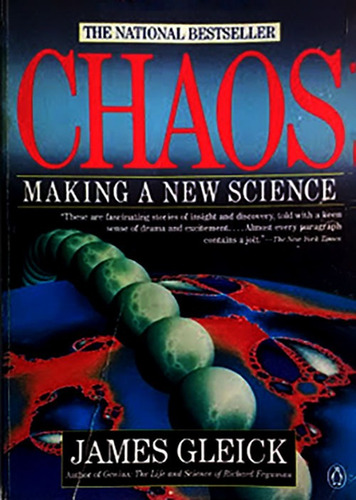Libro Chaos James Gleick Caos
Información sobre el vendedor
Este vendedor tiene buenas calificaciones, pero no concretó varias ventas.

Características del producto
Características principales
Título del libro | Chaos: The Making of a New Science |
|---|---|
Autor | James Gleick |
Idioma | Inglés |
Editorial del libro | Viking Adult |
Tapa del libro | Blanda |
Año de publicación | 1900 |
Otras características
Cantidad de páginas | 354 |
|---|---|
Con páginas para colorear | No |
Con realidad aumentada | No |
Género del libro | Ciencias |
Subgéneros del libro | CAOS |
Descripción
Chaos: The Making of a New Science by James Gleick (1987-10-29)
Publicado por Viking Adult, 1987
ISBN 10: 0670811785ISBN 13: 9780670811786
354 Pp
Chaos, a book by James Gleick, first introduced the concept and early development of the chaos theory to the public. Chaos theory is a relatively new field in physics, and deals with simple and complex causes that react to one another. Chaos theory is considered as the third revolution in 20th-century science that uses traditional mathematical ways of understanding and explaining complex natural systems. It philosophically counters the second law of thermodynamics.
Chaos helps us in understanding the fact that there is growth and pattern in chaos itself, despite the outward appearance of being random. Various concepts such as the butterfly effect, universal constants, and strange attractors are discussed at a length in the book. Numerous theories of Mitchell J Feigenbaum and D'arcy Thompson are discussed in an elaborate manner, while also taking into account their historical background. The book explains the Mandelbrot Set and Julia Set without resorting to complex mathematics. In this book, the importance of scientific education is stressed upon by the author.
This book has been nominated for numerous book awards and widely acclaimed as one of the best books on chaos theory. This book was published in 1997 by RHUK, and is available in paperback.
James Gleick was born in New York and began his career in journalism, working as an editor and reporter for the New York Times. He covered science and technology there, chronicling the rise of the Internet as the Fast Forward columnist, and in 1993 founded an Internet startup company called The Pipeline. His books have been translated into more than twenty-five languages.